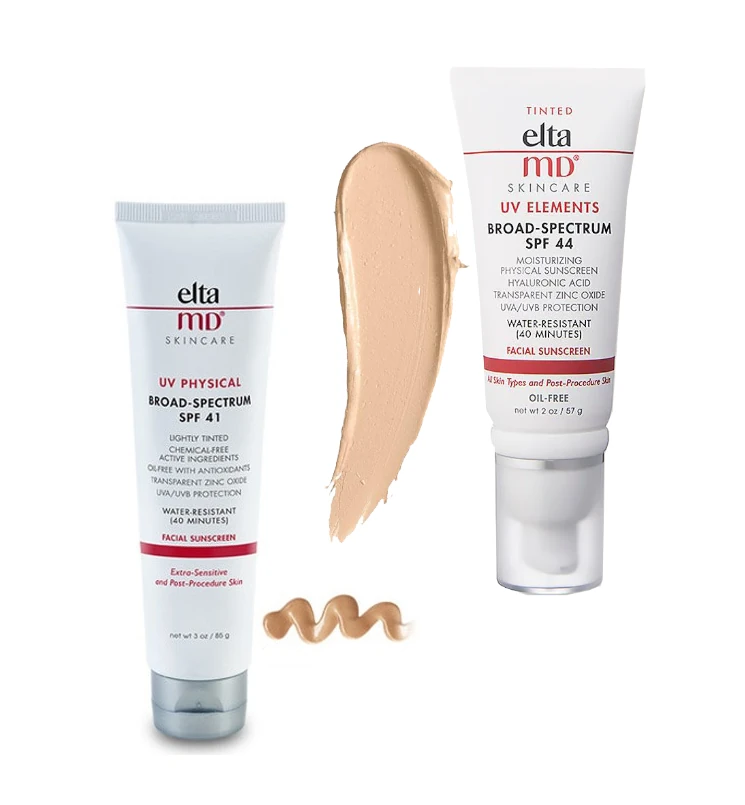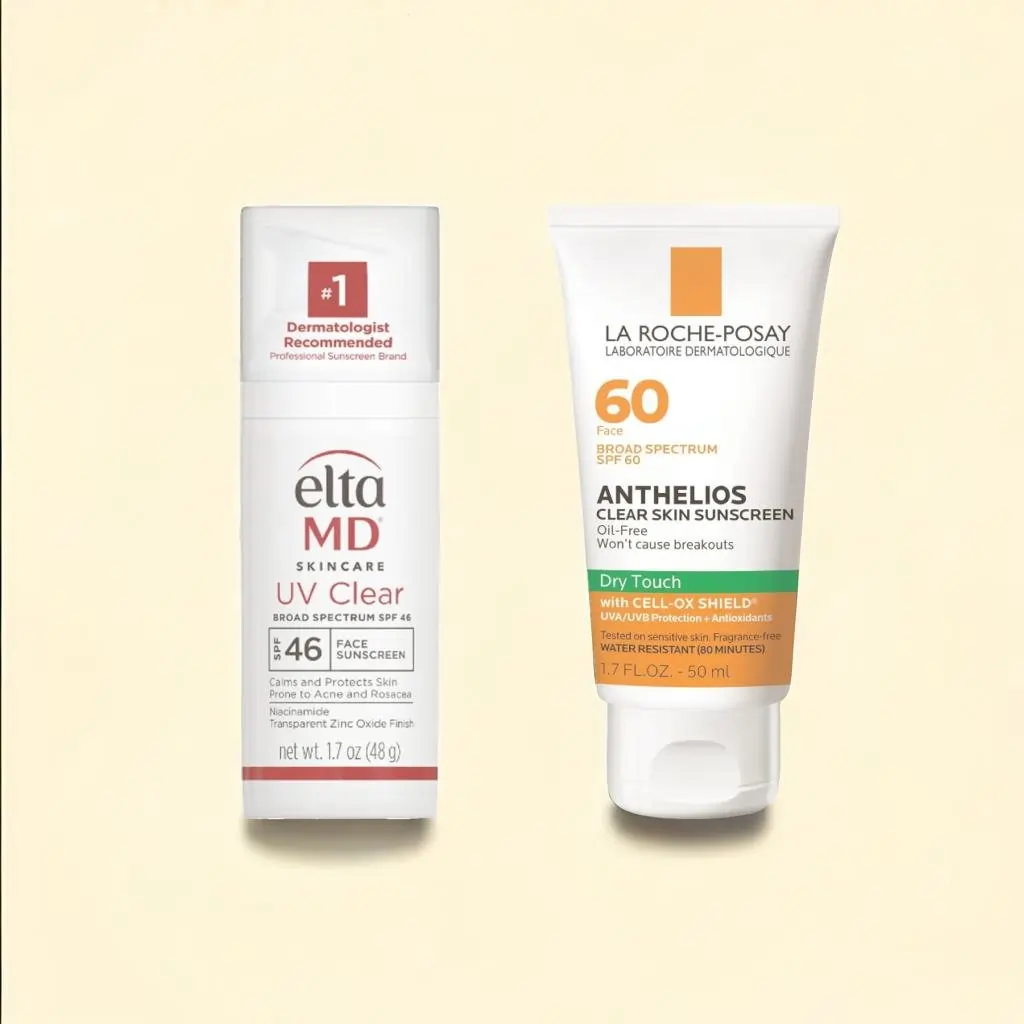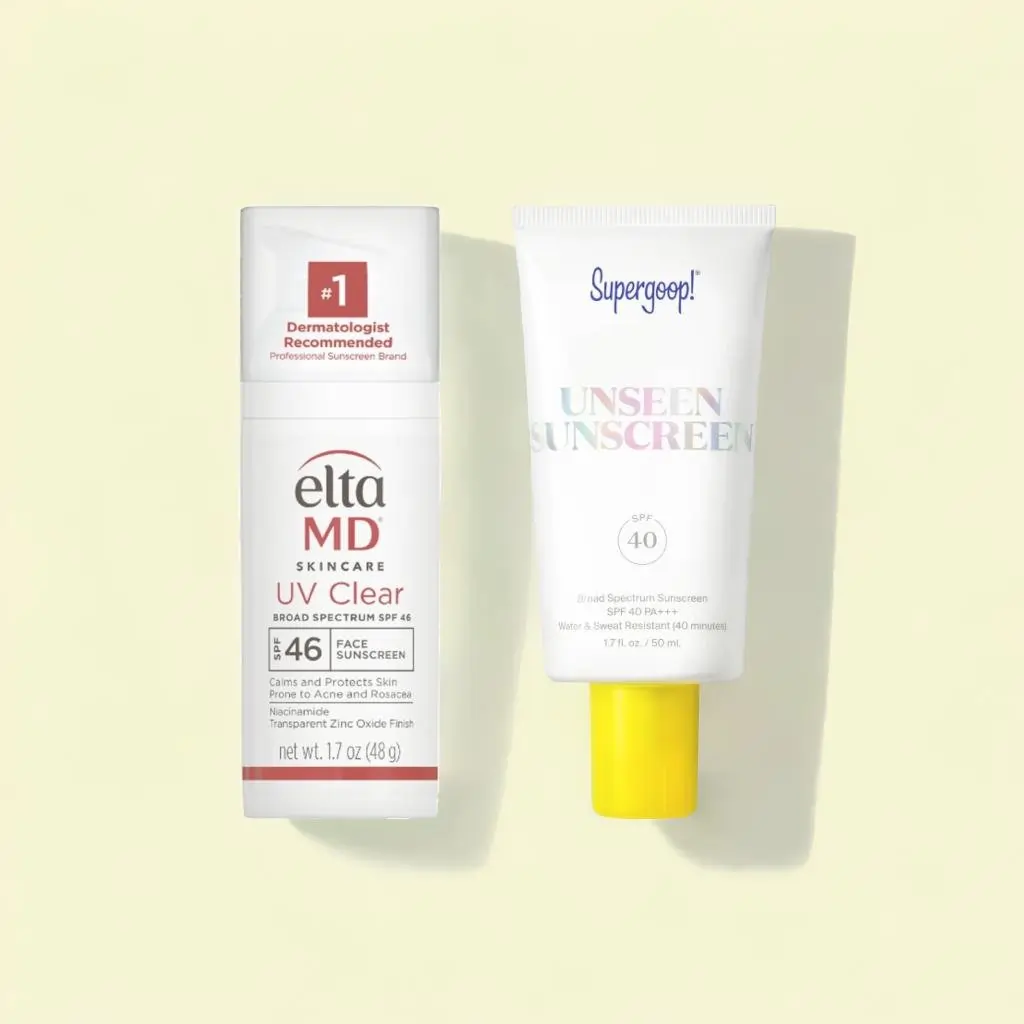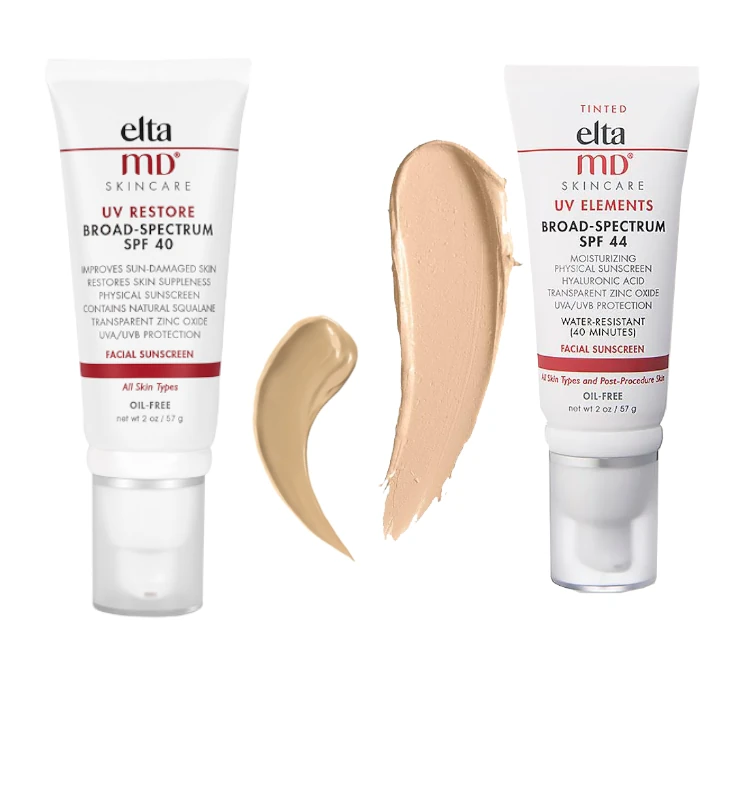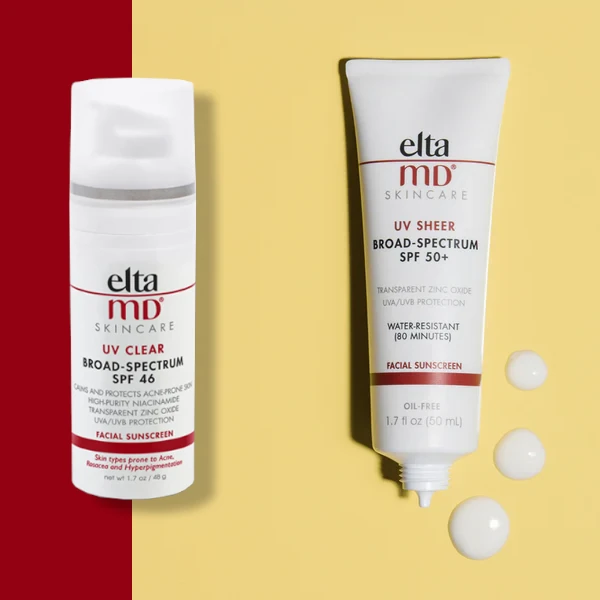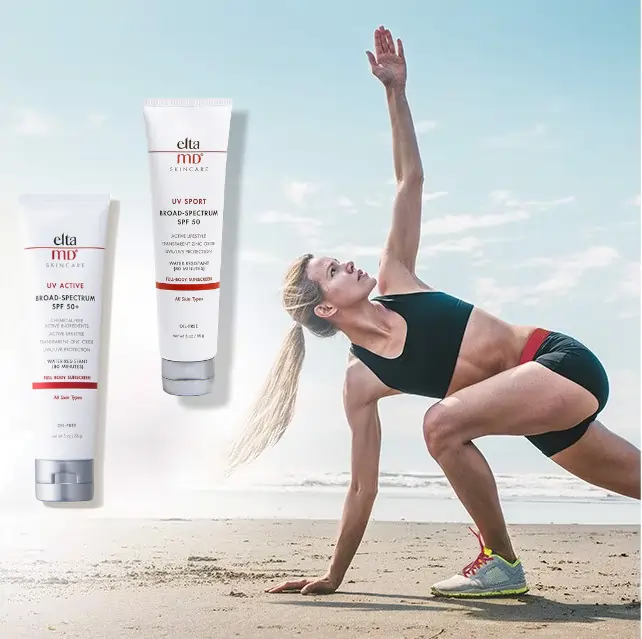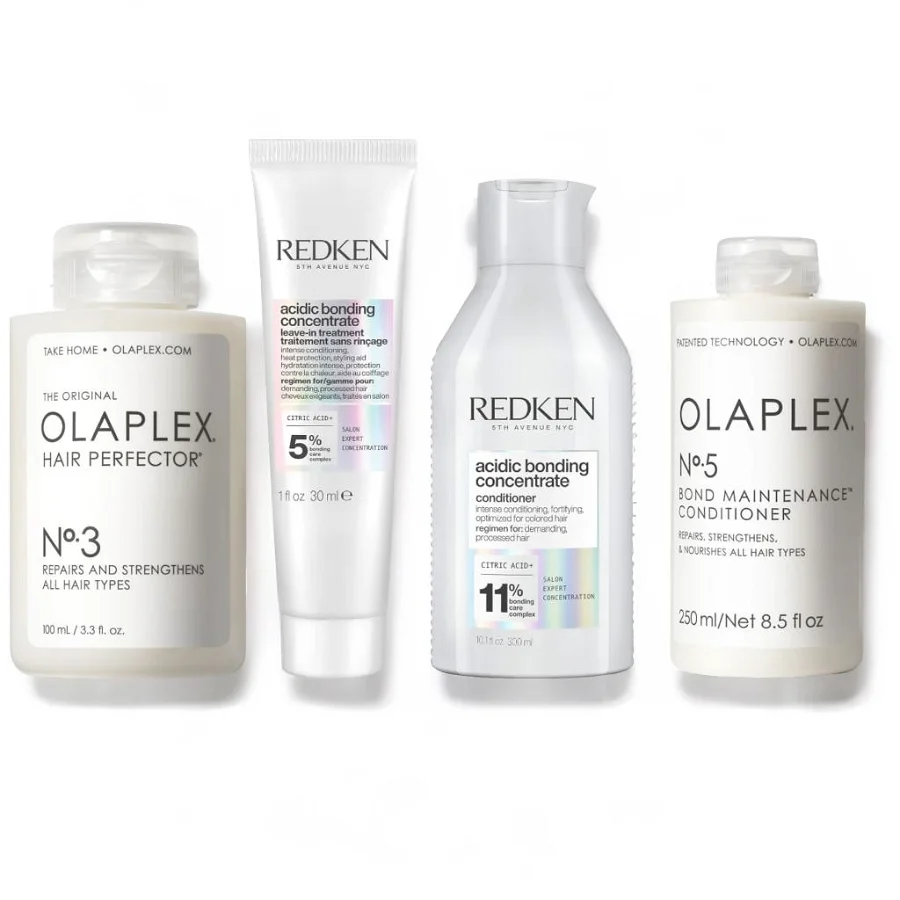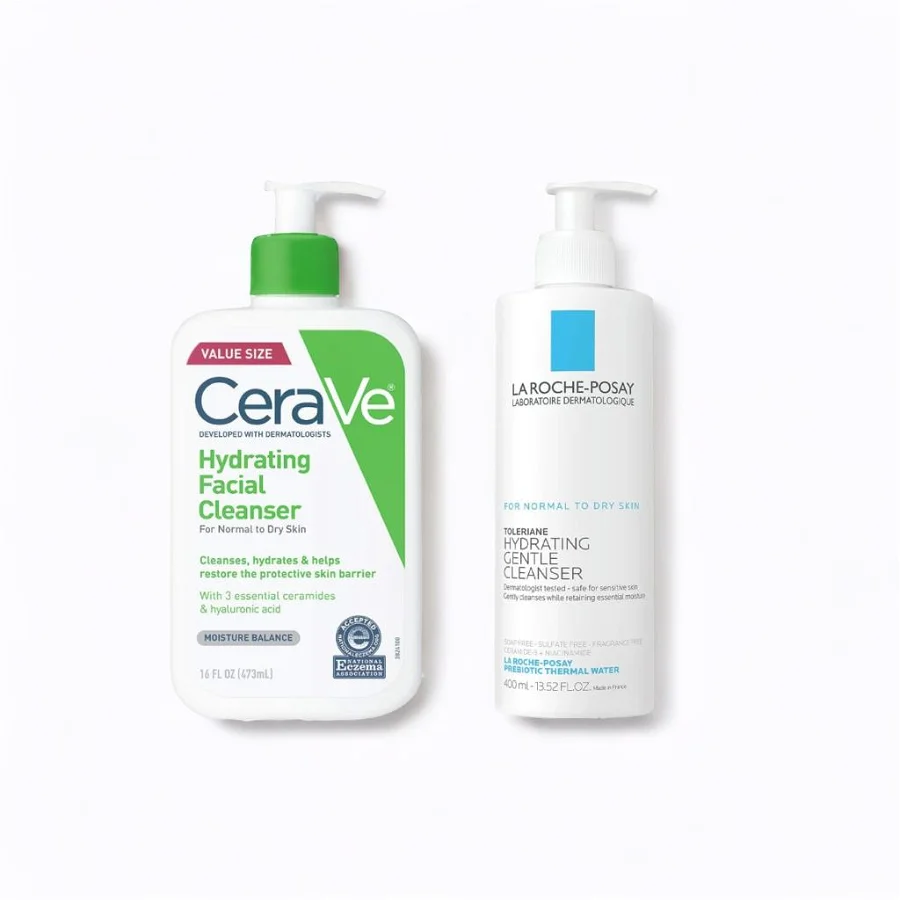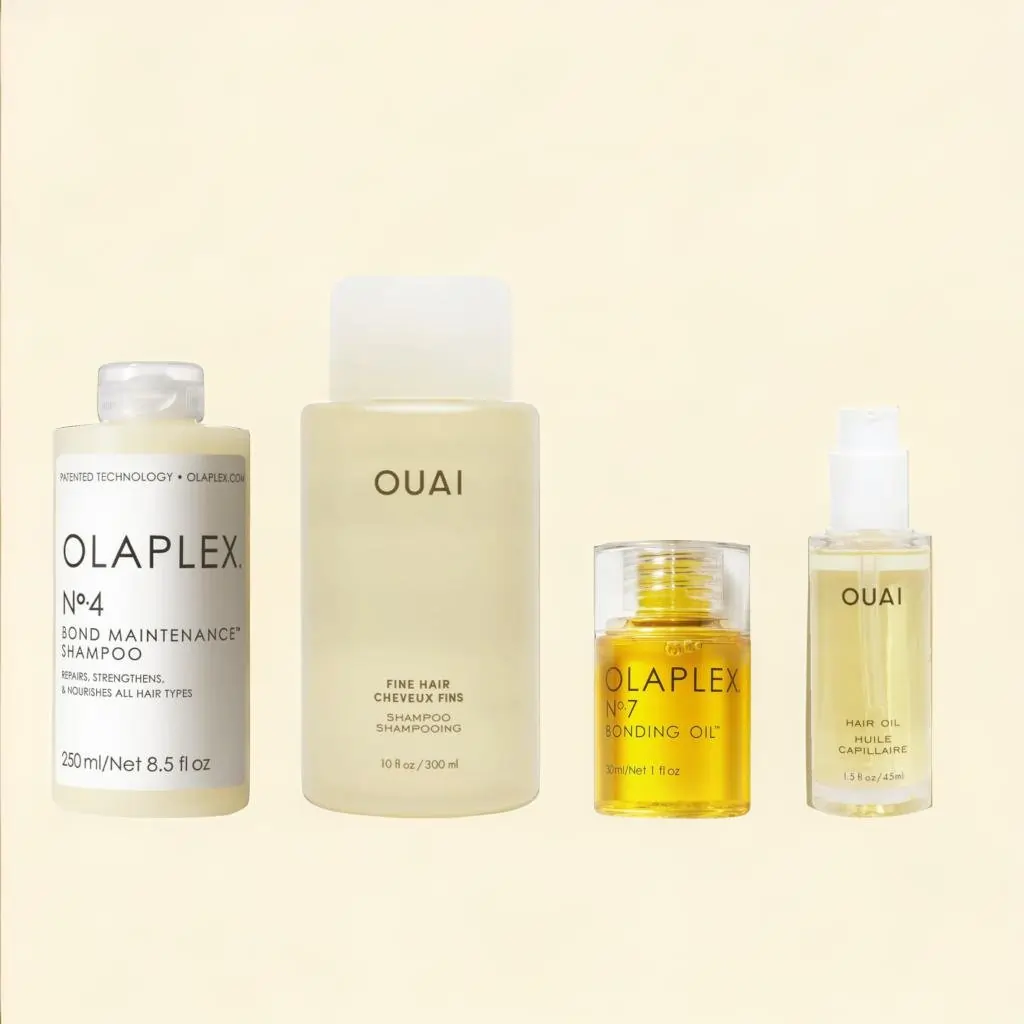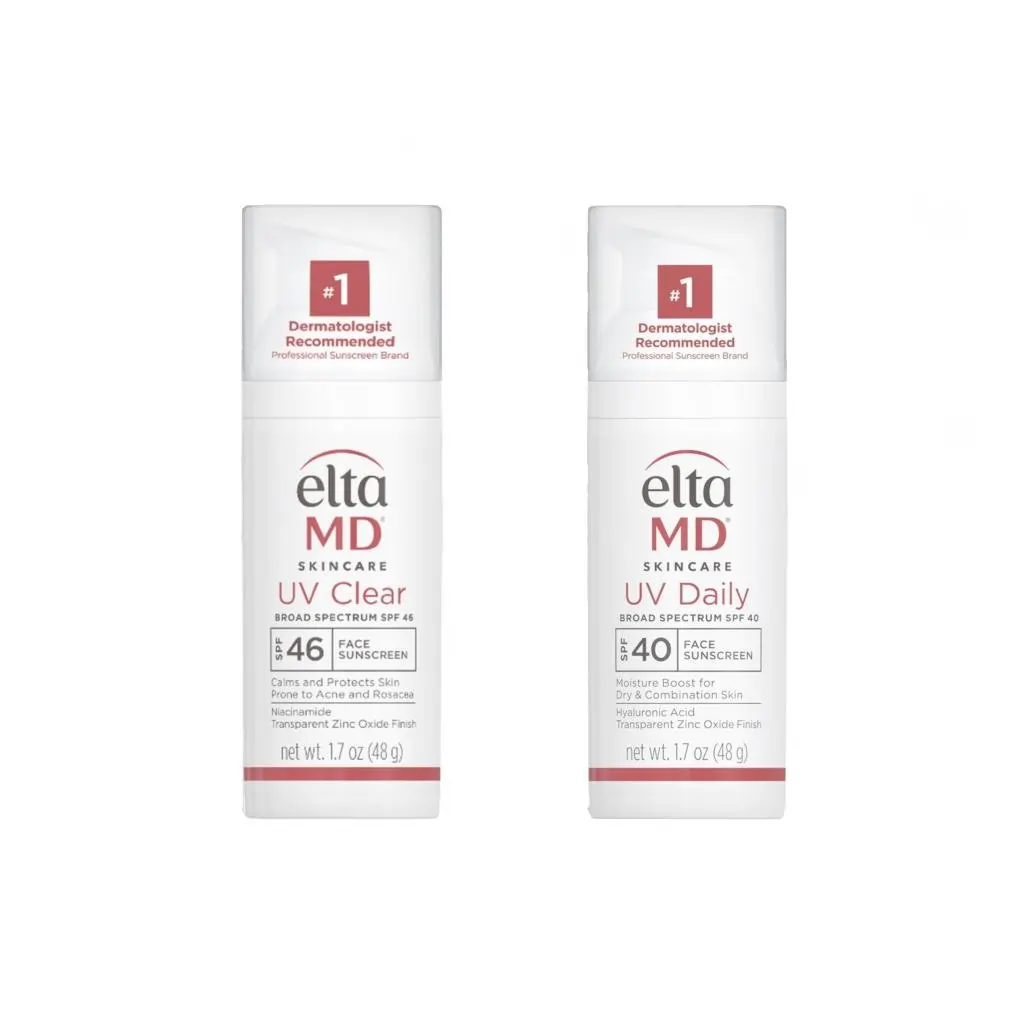
Today, we're diving into the world of mineral sunscreens, and we have two fantastic options from EltaMD for you: the UV Elements Broad-Spectrum SPF 44 and the UV Physical Broad-Spectrum SPF 41.
Both of these sunscreens boast gentle, mineral-based formulas that cater to sensitive skin types, including post-procedure and extra-sensitive skin. So, let's explore the unique features and skincare benefits of each product to help you find the perfect sunscreen for your skin.
EltaMD UV Elements vs EltaMD UV Physical
First up, we have the EltaMD UV Elements Broad-Spectrum SPF 44, a 100% physical sunscreen that combines Zinc Oxide and Titanium Dioxide to provide safe and effective sun protection. This tinted sunscreen features a moisturizing base that is gentle enough for even the most sensitive skin types, including post-procedure skin.
What sets UV Elements apart is its combination of ultra-hydrating Hyaluronic Acid and the antioxidant Ascorbyl Palmitate (vitamin C ester). Hyaluronic acid is a powerful humectant that attracts and retains moisture, improving skin texture and restoring suppleness. Ascorbyl palmitate is a potent antioxidant that reduces free radicals, helps stimulate collagen production, and brightens the complexion, making it an excellent choice for those targeting uneven skin tone and fine lines.
On the other hand, the EltaMD UV Physical Broad-Spectrum SPF 41 is a lightly tinted sunscreen specifically designed for extra-sensitive skin. Like, UV Elements, it also relies on the minerals Zinc Oxide and Titanium Dioxide for broad-spectrum protection. This water-resistant formula is designed to withstand water, humidity, and perspiration, making it ideal for active lifestyles or hot and humid environments.
UV Physical contains a blend of powerful antioxidants (as opposed to just a single antioxidant à la UV Elements), including Linoleic Acid, Quercetin, and Thioctic Acid (alpha-lipoic acid). These antioxidants work together to neutralize free radicals, reduce inflammation, and improve skin texture and tone while also helping to maintain the skin's barrier function and protect against environmental stressors.
Mineral sunscreens, like EltaMD's UV Physical and UV Elements, are often recommended for sensitive skin because they use physical sun-blocking ingredients which sit on top of the skin to create a barrier that reflects and scatters harmful UV rays. Since mineral sunscreens do not penetrate the skin as chemical sunscreens do, they are generally less likely to cause irritation, making them a more suitable choice for those with sensitive skin or skin conditions such as rosacea, eczema, or acne.
When it comes to sun protection, the SPF level plays a crucial role in determining how effectively a sunscreen shields your skin from harmful UV rays. EltaMD's UV Physical sunscreen boasts an SPF of 41, while the UV Elements formula provides a slightly higher level of sun protection with its SPF 44. The difference in SPF levels can be attributed to the concentrations of the mineral sun protectant ingredients in each formula. UV Physical contains 9.0% zinc oxide and 7.0% titanium dioxide, while UV Elements has a higher concentration of 10% zinc oxide along with 5.7% titanium dioxide.
Although the difference in SPF levels between the two sunscreens is not vast, it's worth considering, especially if you have particularly fair or sun-sensitive skin.
When deciding which sunscreen is best for your skin, consider your specific concerns, skincare goals, and skin sensitivities. If you're looking for a sunscreen that targets uneven skin tone and brightens the complexion while being gentle enough for post-procedure skin, the UV Elements might be the better choice. However, if your focus is on maintaining your skin's barrier function and protecting it from environmental stressors, especially if you have extra-sensitive skin, the UV Physical formula could be more suitable.
Whichever EltaMD sunscreen you choose, you can be confident that you're not only shielding your skin from harmful UV rays but also treating it to a dose of skincare goodness. So go ahead and enjoy the sunshine, knowing that your skin is protected, nourished, and radiant!

EltaMD UV AOX Elements Tinted Mineral Face Sunscreen Lotion
Moisturizing tinted sunscreen for dry skin.
Pros
Ultra-hydrating hyaluronic acid
Cons
Only single antioxidant
What makes it special? EltaMD UV Elements is a 100% physical sunscreen in a tinted, moisturizing base. It is gentle for even the most sensitive skin types, including post-procedure skin. Its chemical-free actives, zinc oxide and titanium dioxide, provide safe but sure sun protection. These mineral-based UV filters work with ultra-hydrating hyaluronic acid to protect and hydrate the skin.
Pros
Water-resistant formula
Cons
Lower SPF protection
What makes it special? For oil-free sun protection with just a touch of color, our lightly tinted UV Physical is a healthy choice. This chemical-free mineral sunscreen has antioxidants to neutralize free radicals. Water-resistant UV Physical withstands water, humidity and perspiration.
